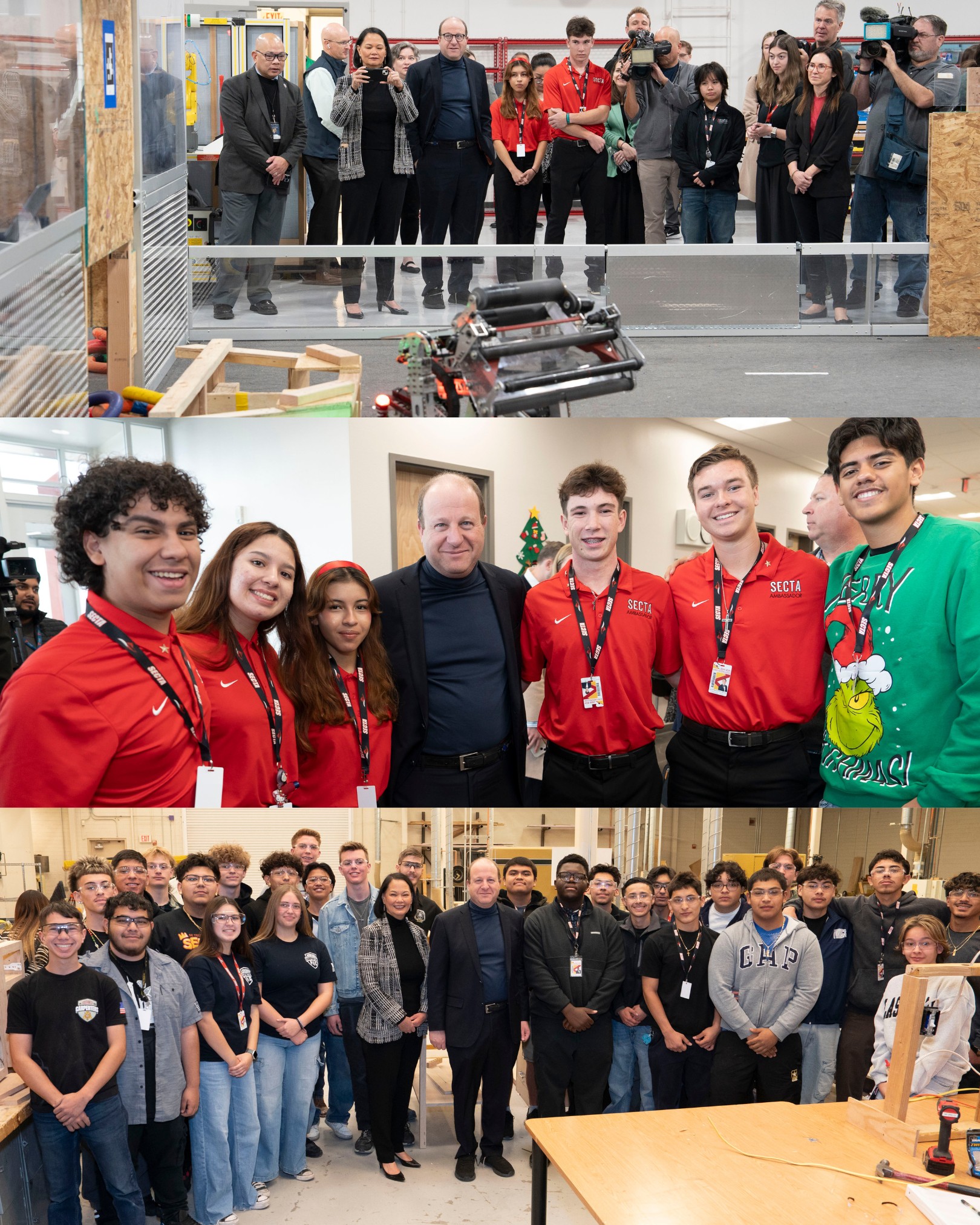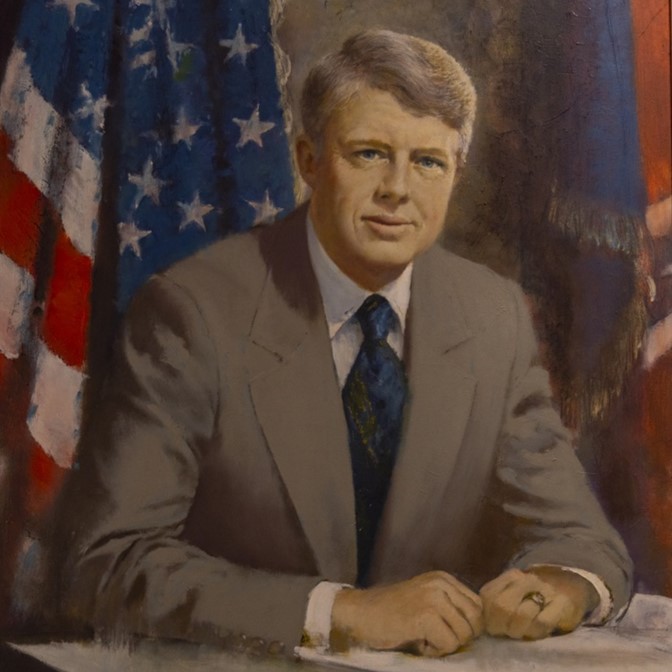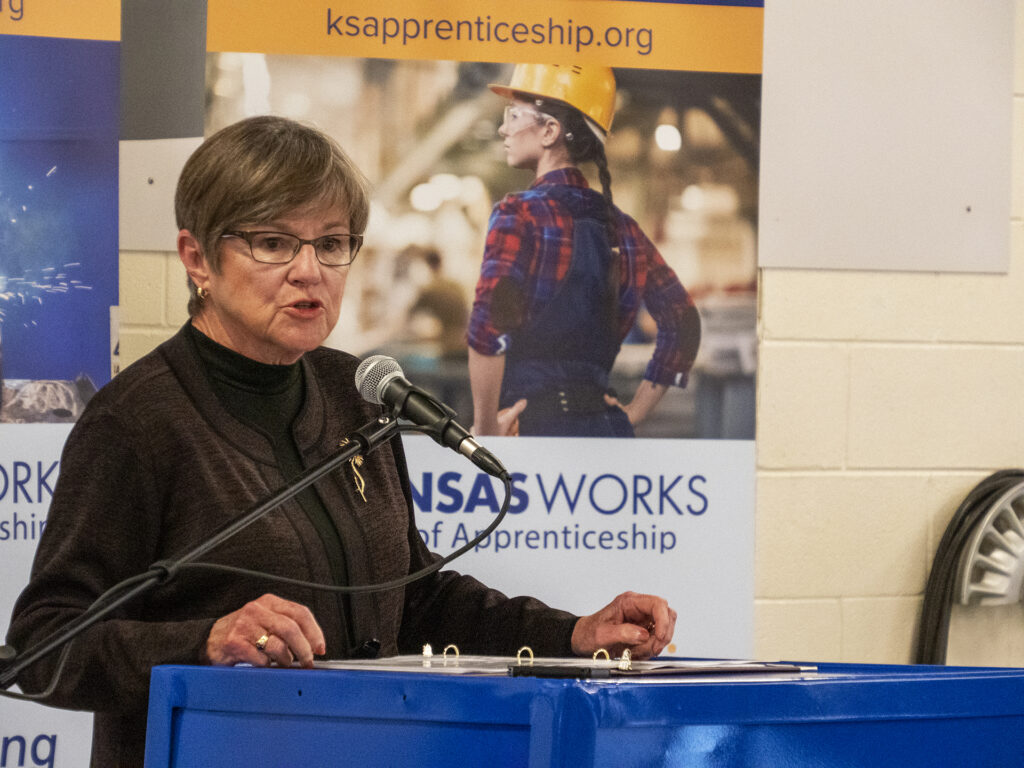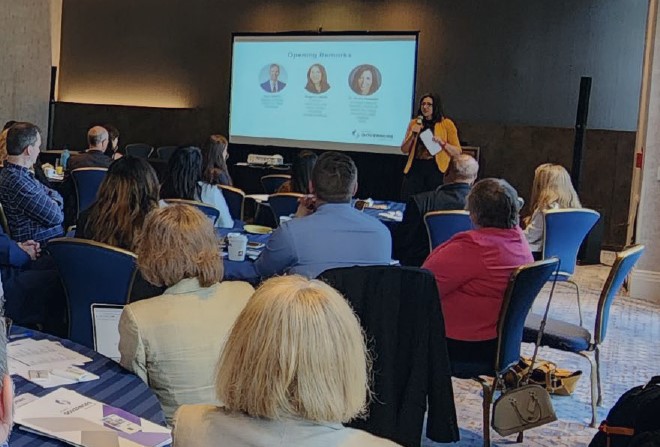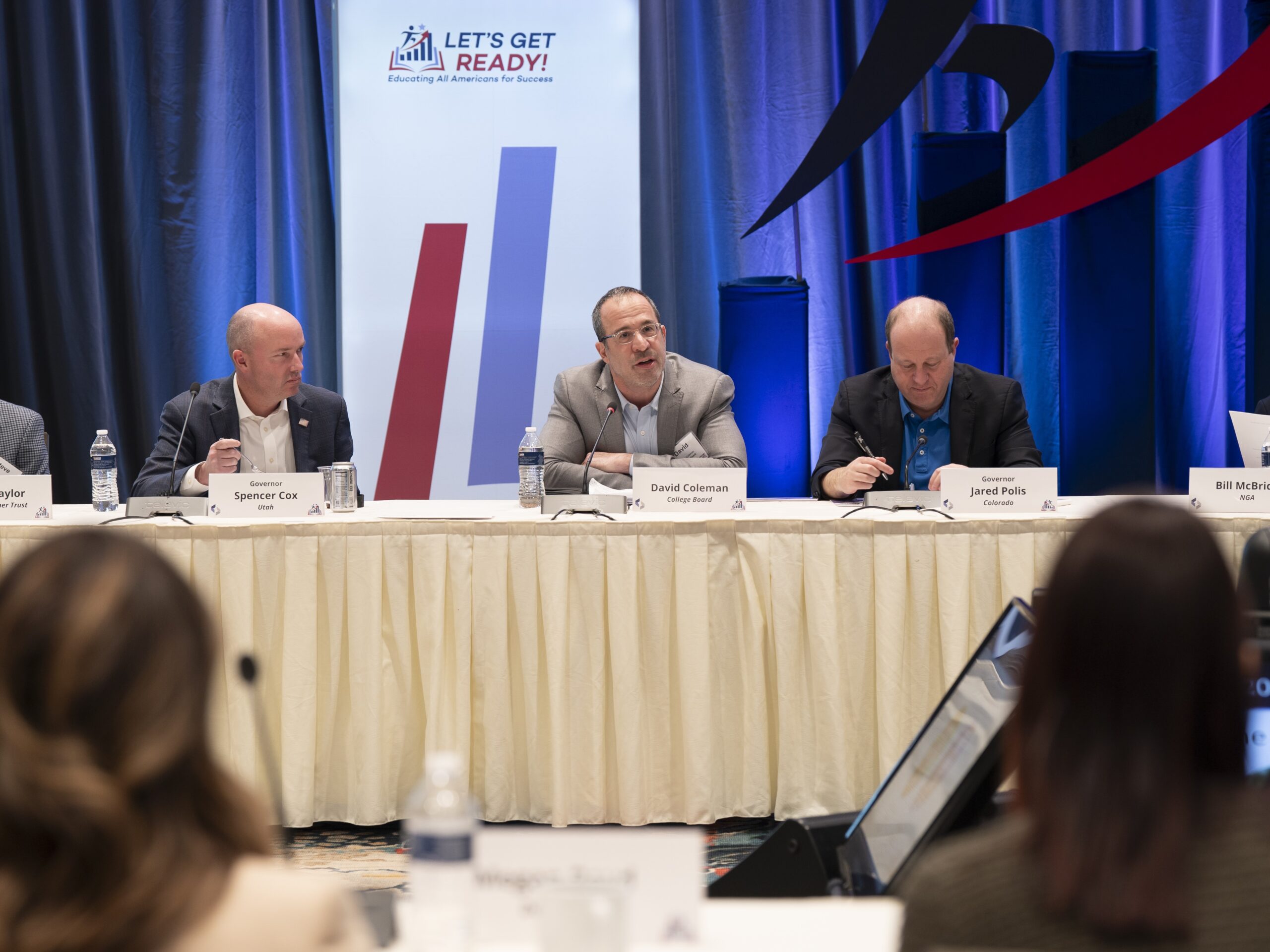The vision for postsecondary education at the state level in the coming year is taking shape through Governors’ State of the State and inaugural addresses. To date, every speech has addressed education in some way. Certain themes – diverse postsecondary learning models, career pathways, expanding postsecondary education, and funding – were identified across multiple addresses.
Last year, Governors addressed a range of postsecondary topics in their speeches. Many of those subjects continued to resonate as Governors seek to position their postsecondary systems to recover from the impacts of the COVID-19 pandemic and respond to emerging demands. The list of priority topics includes:
- Work-based learning and apprenticeships
- Healthcare workforce development
- Education in technology infrastructure
- Funding for institutions
- Funding for students
Diverse Postsecondary Learning Models
Work-Based Learning and Apprenticeships:
Work-based learning is an instructional strategy that enhances classroom learning by connecting it to the workplace. Similarly, apprenticeships combine paid on-the-job training with classroom instruction to prepare workers for careers that require learned skills. These pathways are key strategies for Governors in the development of a diverse and skilled workforce.
“This past fall, I created the Office of Registered Apprenticeship in the Department of Commerce. Right now, 3,500 Kansans are gaining the skills, the mentorship, and the credentials they need to succeed in the industries driving the future of our state, from energy to healthcare to advanced manufacturing. Those are 3,500 Kansans who won’t just have jobs – they’ll have careers. Those are 3,500 Kansans who will be able to support a family and save for retirement. Those are 3,500 Kansans putting down roots and contributing fully to their communities. My budget increases funding for the Office of Registered Apprenticeship, giving more Kansans the tools they need to join the modern workforce. We must continue building on the Office’s good work.”
Kansas Governor Laura Kelly
“We modernized our apprenticeship system – quadrupling the number of apprenticeship opportunities in Montana. And we’re seeing the results. In 2022, Montana added more than 1,000 apprenticeships and more new employer sponsors to our Registered Apprenticeship Program. We have more apprentices now than ever before.”
Montana Governor Greg Gianforte
“There is no one solution. That’s why we must look at every proposal and understand if, and how, it will increase the number of people working in Vermont or help bring new Vermonters here. It’s about staying focused and having the commitment to chip away at this problem. This is what we have been doing with investments in tech centers, expanding internships and apprenticeships, and building adult training programs that help people learn new skills for better paying jobs. The budget I’ll present in two weeks will continue to invest in our workforce.”
Vermont Governor Phil Scott
“We had record-high job numbers in 2022 in key sectors like construction, wholesale trade, professional, scientific, and technical services, and transportation and utilities. Our Registered Apprenticeship program last year had the highest number of participants ever in state history. And last year, we added 14 new career pathways to our Youth Apprenticeship program in construction, agriculture, health sciences, and science and engineering. We made a groundbreaking investment into three programs designed to address our state’s post-pandemic workforce needs, including our Worker Advancement Initiative and our Worker Connection Program, which helped provide more skills training and career coaching, and connected unemployed workers with available jobs.”
Wisconsin Governor Tony Evers
Career Pathways
The career pathways approach aids in acquiring industry-specific skills and credentials through an alignment of education, training and employment, and human and social services. Examples of this approach – such as pathways for those who wish to join the healthcare workforce or seek the skills needed to work in technology infrastructure – were common in this year’s speeches.
Healthcare Workforce Development:
Due to issues such as the aging of a generation and the COVID-19 pandemic, concerns about the healthcare workforce have been a topic of discussion for many years. As a result, Governors continue to find inventive ways to address this issue.
“Last year we created Care Forward Colorado, which makes it completely free for Colorado students to pursue careers in healthcare at any community or technical colleges, and guess what, demand and enrollment increased. But we want to go beyond just healthcare and into other areas where we are experiencing shortages. I’m proposing we expand Care Forward Colorado to include free training for other in-demand fields in the public and private sector like construction, firefighting, law enforcement, nursing, and early childhood education. In addition, we know that the number of Coloradans pursuing postsecondary education or training right out of high school has been declining. To address this challenge, I am proposing a new scholarship for graduating high school seniors in the class of 2024 who pursue postsecondary education, training, or certifications.”
Colorado Governor Jared Polis
“We are adding and emphasizing several high priority items… [including] more resources for the Hawai‘i State Loan Repayment Program to help pay off educational loans for primary care and behavioral health providers, so that Hawai‘i remains the health state for generations to come — this investment will address our statewide healthcare provider shortage once-and-for-all. Over 60 new positions to expand nursing and medical programs across our UH campuses, with a special emphasis on behavioral health.”
Hawai’i Governor Josh Green
“Tonight, I’m announcing that we’re increasing funding for the healthcare apprenticeship program we created last year, taking it from $3 million to $15 million. In addition to expanding opportunities for nursing pathways, we’ll be adding apprenticeships for emergency medical services, mental and behavioral health, and direct support professionals.”
Iowa Governor Kim Reynolds
“This year, to address the severe shortage of Certified Nursing Assistants all across our state, we are proposing nearly $4 million dollars to boost C-N-A training and programs. With this increase, we expect 4,000 additional students to gain C-N-A training and employment at a long-term care facilities and other medical facilities, including our Missouri Veterans Homes. We owe it to Missourians to provide them with quality care, and C-N-As are critical to that mission.”
Missouri Governor Mike Parson
Education in Technology Infrastructure:
As technology continues to rapidly develop, the workforce and infrastructure needed to maintain it must also advance. The skills needed are continually updating, and Governors are working to ensure their workforces are ready to meet the ever-changing demand of the field.
“To reach more students and to provide better training for 21st Century jobs, our budget will invest $300 million of one-time funding for capital improvements and equipment for career tech education.”
Ohio Governor Mike DeWine
Expanding Postsecondary Education
Governors are consistently developing new ways to ensure their constituents gain the skills they need to obtain high-paying, skill-oriented jobs. In some cases, this involves either the creation of new programs or the expansion of existing ones. Some Governors have also began attempting to overhaul the definition of what being skilled means in their state.
Creating More Opportunity Pathways
Connecting job seekers to postsecondary education and training is a key step in developing a skilled workforce. Some Governors look to achieve this goal by creating new opportunities for accessible and affordable training, while others are scaling innovative programs already in place to support more learners. Increasingly, Governors are also opening opportunities for job seekers to be employed by the state government without a college degree.
“Using an alternative pathway towards a rewarding profession is a guide to how we grow our state. Our state government has begun to accept real-world experience as a substitute for a college education. This is a smart, common sense approach to allow all Marylanders to serve. But we must go further. To rebuild state government, and to give all Marylanders an opportunity to be a part of it, my administration will be looking at current standards to make sure they meet the requirements for the jobs we must fill. And while Maryland is home to some of the world’s greatest institutions of higher education — a fact of which we should be very proud — we must end the myth that young people must attend one of them to be successful.”
Maryland Governor Wes Moore
“In my first budget, I will create and fund a new program called MassReconnect. This will offer free community college to students over 25 who don’t have a college degree. We’ll also enhance early college opportunities and increase funding to our state university system so everyone can afford a higher degree.”
Massachusetts Governor Maura Healey
“To help even more people ‘Make it in Michigan,’ let’s take steps to lower the age for Michigan Reconnect from 25 to 21. Reconnect is our bipartisan program that offers anyone 25 and older a tuition-free associate’s degree or skills training. … Over 113,000 Reconnectors have been accepted, and we want that number to grow. Let’s unleash opportunity for young people while offering companies the skilled, hardworking talent they need to succeed in Michigan.”
Michigan Governor Gretchen Whitmer
“These open and unfilled jobs are a reminder of our need to make good on our commitment to provide the appropriated $88 million in matching funds for private-sector investment for the designated career and technical centers across the state, so construction can begin this spring.”
North Dakota Governor Doug Burgum
Reshaping the Postsecondary Landscape
Governors are focusing on funding to support information, access, and affordability to address the drop-off in enrollment at public institutions and the college access mechanisms that struggled during the recent pandemic. They are proposing new ways to incentivize the connection between K-12 and postsecondary programming so that students can explore and prepare for college and career opportunities. Governors across the political spectrum are also proposing funding and support of credentialing programs that move people quickly into high-need jobs with family-sustaining wages.
“To overcome this challenge, my budget restores NSHE’s operating budget to pre-pandemic levels and sets aside $5 million to pay for a study of the higher education funding formula. … We will also: increase funding for workforce innovation, to better respond to the needs of various organizations for workforce training; invest $75 million for the long-term stability of the state’s Millennium Scholarship program; invest $65 million in deferred maintenance for aging buildings; put $20 million more in graduate student stipends and to support research at our system institutions; add $9 million to build-up the faculty at UNLV Medical School, so that we can accommodate more medical students. and appropriate $6 million to continue state support for Promise Scholarships, for Nevada high school graduates attending our community colleges.”
Nevada Governor Joe Lombardo
“I want to challenge our high schools and CareerTechs to be more responsive to our workforce. Because Oklahoma needs more truck drivers, more electricians, plumbers, and aviation mechanics. I want us to rethink our Career Tech funding model. We created this model over 60 years ago. Let’s reimagine our approach. Instead of just building new buildings, let’s invest in high school freshman so they graduate ready to start a career in cybersecurity or diesel mechanics. For Oklahoma to keep up with the jobs of tomorrow, we must transform our state economy into an innovation economy.”
Oklahoma Governor Kevin Stitt
“We must provide choice within the public school system by accelerating our bipartisan efforts to build lab schools. And we must accelerate dual-enrollment partnerships between our high schools and our community college system, so we WILL realize a day where every child graduates with an industry recognized credential.”
Virginia Governor Glenn Youngkin
Funding
Funding for Institutions
While Governors are thinking about the entire ecosystem of postsecondary options – not just four-year pathways – they acknowledge that public postsecondary systems are key vehicles for state talent development strategies. To this end, Governors have outlined opportunities for increased institutional investments for program development and capital improvements.
“I’m asking the legislature to support a $184 million increase in higher education funding, and support the Commission for Higher Education’s proposal to reward our world-class universities for keeping their graduates in careers in our state. After all, Indiana’s college campuses need to be the epicenters of brain gain – not brain drain! Another pathway to brain gain is enrolling more first-generation, and low-income minority college-goers, which is why we should support Martin University’s mission. And we can easily ensure thousands more students have their college opportunity paid by automatically enrolling all financially eligible students in the immensely successful 21st Century Scholarship Program, once and for all!”
Indiana Governor Eric Holcomb
“I am also recommending that the state assume responsibility for funding our community colleges across the state. … We all agree that our kids are our future. We need more of them to pursue their degrees here. We need to attract more students from other states. We need better outcomes for Nebraska’s workforce. We need more engineers, actuaries, accountants, architects, geneticists, scientists, nurses, and teachers. We need more welders, auto technicians, electricians, and technicians to fix computing dependencies on cars, trucks, tractors and combines – almost everything. It is essential. The success of our community colleges that we conceived over 50 years ago has a higher calling today than ever before. It’s the 21st century, yet 50 percent of our kids are not obtaining any training beyond high school. Together, we have to create better opportunities for all. The success of utilizing community colleges in Nebraska for students best suited for trades is a game changer.”
Nebraska Governor Jim Pillen
“Pathways to success don’t look the same for every Tennessean, nor should they. For many, a certification from one of our Tennessee Colleges of Applied Technology [TCAT] will open the right doors. Since 2019, we’ve prioritized TCAT construction across this state, so more Tennesseans can kickstart a great career close to home. Today, nearly 9 out of 10 graduates get a job in the field they studied. This year, I propose that we complete Tennessee’s TCAT Master Plan. To do that, we’ll expand and improve 16 existing TCATs, replace seven outdated facilities, and build six brand new TCATs at strategic locations across our state. Our goal is to train 10,000 new skilled workers a year. To achieve this, we’re proposing $1 billion in this budget – the largest investment in our technical colleges in state history.”
Tennessee Governor Bill Lee
Funding for Students
To encourage postsecondary enrollment, Governors are aiming to increase the affordability of high-quality programs and exploring models to provide learners with more flexibility and funding options.
“I am very proud to announce my budget provides access to a scholarship of $8,500 starting next year to graduating high school students in Idaho to attend an Idaho university, community college, career technical or workforce training program of their choice. Never have we provided a catalyst of this magnitude for students to ‘go on,’ in whatever way suits them. There are many pathways to success in today’s economy and all pathways deserve our support. For some students, it means getting their CDL, becoming a lineman, or pursuing welding. For others, it is engineering, teaching, healthcare, or business. No matter what path a student chooses we are making it easier for them to get the advanced training they need to propel themselves and Idaho’s economy forward. The ‘Idaho Launch’ scholarship will be the single largest investment in career technical and workforce education in state history. We want Idaho students brought up in Idaho schools working in Idaho jobs.”
Idaho Governor Brad Little
“With a $100 million increase to MAP, we can make history. Together with Pell grants, virtually everyone at or below median income in Illinois can go to community college tuition-free. That means higher wages and better jobs in healthcare, IT, construction management, manufacturing, accounting, and much more. For decades we neglected direct investments in our state universities and community colleges. I propose we raise our direct investment in them by $100 million — the largest increase in more than two decades. This is yet another way to make college more affordable. After years of decline, we’re seeing growth across higher education in Illinois that’s well above the national average. This is our moment to take it all to the next level.”
Illinois Governor J.B. Pritzker
“The Opportunity Scholarship is providing free higher education for New Mexicans of every age, every background and every walk of life, so that every person in our state has a chance to achieve their full potential. Since we created tuition-free college, New Mexico college enrollment has increased for the first time in over a decade, and the number of first-time, full-time students has grown by nearly 10 percent—the second-highest college enrollment gain of any state in the country.”
New Mexico Governor Michelle Lujan Grisham
“My Executive Budget marks the fourth consecutive year that I have asked the General Assembly to freeze college tuition for in-state students, with an appropriation to our institutions of higher education of $43 million. … We are also providing a record amount of financial aid and scholarships for students in need. I propose providing $80 million so that every South Carolinian who qualifies for federal need-based financial aid – as measured by federal Pell Grants – receives sufficient state financial assistance to attend any in-state public college, university, or technical college. And students at private, independent, and historically black colleges and universities will receive an additional $20 million for tuition grants and assistance.”
South Carolina Governor Henry McMaster
Postsecondary education continues to be a key issue in all states and territories, and a focus for Governor’s administrations. Increasing diverse postsecondary learning models, creating more career pathways, expanding postsecondary education, and implementing additional funding to support students are all necessary for the development of a strong and diversely skilled workforce. As states look to carry out their visions for postsecondary education in the coming year and beyond, the National Governors Association Center for Best Practices will continue to help Governors and their staff develop and implement innovative solutions to a range of issues.
This article was developed by Charles Schonberger, NGA Center for Best Practices. For more information on Governors’ efforts please contact communications@nga.org.


